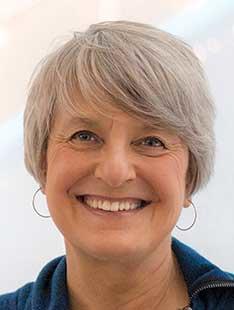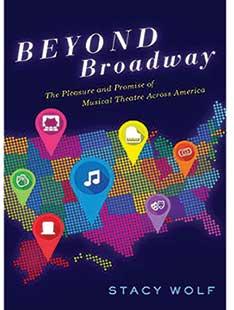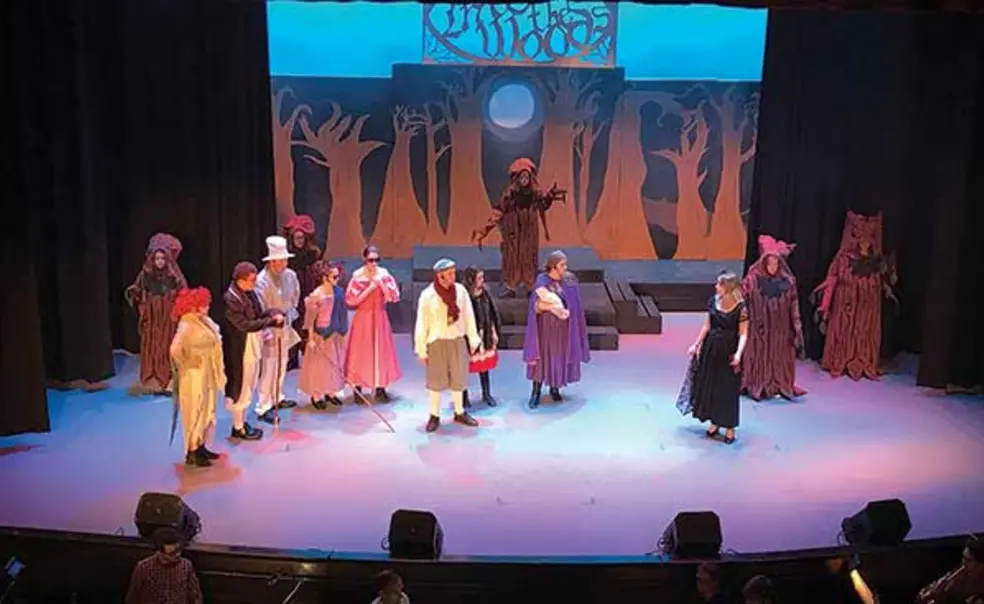Stacy Wolf: All the World’s a Stage
A cross-country examination reveals how Broadway permeates American culture

How did going to a dinner theater near your hometown of Columbia, Md., at a young age ignite a lifelong passion for musical theater?
I loved what I saw at the dinner theater, a production of The Music Man, and by fourth grade, I had experienced many forms of local theater as a performer and spectator — professional, community, high school, after-school program, summer camp. I was obsessed with musical theater, but I had never been to a Broadway show. And I was not unique. For many of us who did musical theater when we were young, it became a passion. I became an English teacher and taught plays, and then went back to graduate school and studied theater history, theory, and criticism. At the time, there was really not anything that we would understand as a field of musical-theater studies. That didn’t happen until after I finished grad school. But musical theater is a vital part of American history and culture, a popular middlebrow form that participates in the construction of ideas about America.
How does this vibrant local amateur scene ultimately sustain Broadway productions?
A huge part of the ecosystem is the companies that license the rights to perform Broadway shows to local and amateur productions. The income from that can account for a significant percentage of the revenue of a Broadway show in the long run. And producers increase that revenue when licensors create and distribute shorter versions of shows. There are one-hour versions of Godspell, Annie, and Into the Woods, for example, all created specifically for schools to perform. Lively local theater scenes in communities around the country help create the audience for Broadway shows — and cultivate those who later create and star in those shows.

There’s an amphitheater at the top of Mount Tamalpais in the Bay Area of California where live theater has been performed since 1913. It’s called the Mountain Play. You take a school bus up six miles, or bike or hike to get there. Gigantic boulders make up the 3,750 seats. I saw The Sound of Music there with a live orchestra. It was spectacular.
How did the TV movie High School Musical — which aired in 2006 — affect attitudes about theater?
High School Musical was a watershed moment. It was the most-watched Disney Channel movie of all time when it aired. It refuted all these stereotypes — that if you were a boy, you couldn’t be interested in musical theater and also be athletic, or that if a boy liked theater, he had to be gay. At the same time, there was cultural change and more acceptance of the LGBT community. The TV show Glee, which first aired in 2009, and the Broadway show Hamilton, which opened in 2015, also helped foster interest in the genre among boys and girls. Stagedoor Manor, one of the most well-regarded theater camps, had to build a whole new boys’ dorm in 2008 to accommodate interest from boys.
You point out that coming together to rehearse and perform a musical is sort of old-fashioned in today’s digital landscape.
Young people have to put down their phones! Musical theater is an old art form that is so time-consuming, and it requires so many people, but people want to do it. Making something together is incredibly powerful and meaningful.
Some Broadway shows have been created with the school audience as the primary goal?
Yes, the Disney musical Newsies was never intended to enjoy a long Broadway run. The producers wanted it to play in New York long enough to earn the “as seen on Broadway” imprimatur. The ultimate goal was local productions at schools and universities.
How does technology provide a way for young people to expand their understanding of musical theater?
Today, most kids have already watched a lot of productions online before they go and make their own. That affects how they create characters — they tend to borrow from what they’ve seen and create a character through a kind of bricolage technique. I think that’s a good thing. Ideas about creativity and originality are different in an age when we have access to so many people’s interpretations. They look at their phones to get ideas about, say, building the puppet Milky White for Into the Woods without spending any money. Then they have to put down their phones to go and create something.
Interview conducted and condensed by Jennifer Altmann
This is an expanded version of an interview from the April 8, 2020, issue.












No responses yet